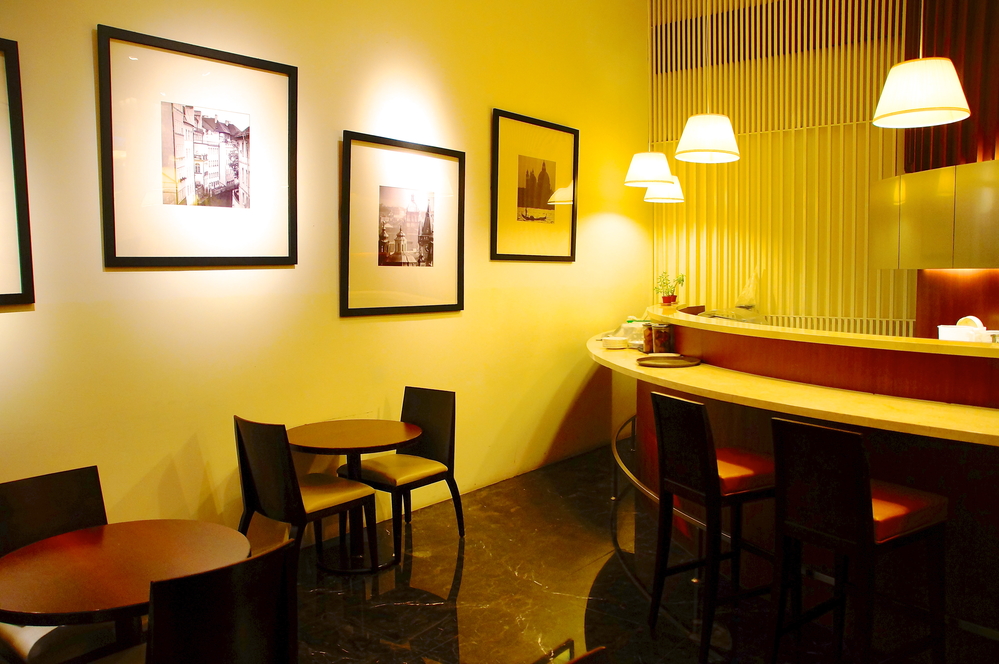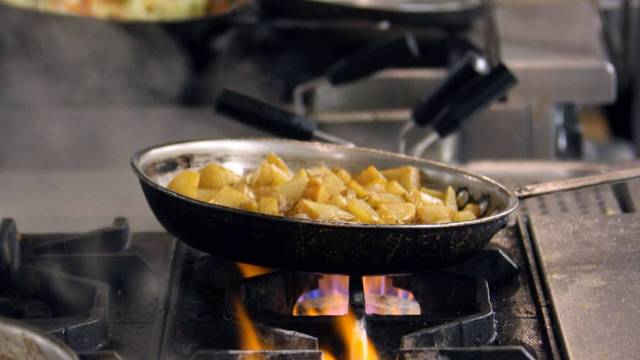Asian Fusion Restaurant: An One-of-a-kind Dining Experience in the Heart of Islamabad
Asian Fusion Restaurant: An One-of-a-kind Dining Experience in the Heart of Islamabad
Blog Article
Savor Genuine Oriental Food With a Pan-Asian Spin for a Culinary Experience
Beginning on a cooking trip through genuine Eastern food, improved with a Pan-Asian spin, offers an one-of-a-kind opportunity to check out the rich tapestry of flavors that define the region's varied cooking traditions. This experience welcomes you to appreciate the exquisite balance of tastes-- wonderful, salted, spicy, and sour-- balanced by fragrant herbs and flavors. Picture the innovative fusion of Thai curry and ramen or the unexpected pleasure of sushi burritos. As you consider these enticing meals, take into consideration the cultural narratives and historical impacts that shape them, each bite offering a story waiting to be found.

Exploring Pan-Asian Tastes
In the world of global gastronomy, Pan-Asian food attracts attention for its impressive diversity and the unified interplay of tastes from different Eastern societies. This culinary approach commemorates the rich customs and one-of-a-kind active ingredients located across the continent, developing a tapestry of preferences that is both satisfying and fascinating. Trick to Pan-Asian cuisine is its ability to stabilize contrasting flavors-- sweet, salted, spicy, and sour-- while highlighting the quality and top quality of each component.
From the umami-rich soy sauce of Japan to the intense chili peppers of Thailand, Pan-Asian cuisine uses an extensive palette of tastes. These components are frequently integrated in creative means, boosting recipes with layers of complexity. As an example, the use of fragrant natural herbs such as lemongrass and cilantro, usual in Vietnamese and Thai food, adds a rejuvenating brightness to recipes, while the consolidation of coconut milk delivers a creamy, rich appearance.
The focus on fresh produce and aromatic spices guarantees that each dish is not just a banquet for the taste but likewise for the detects. Pan-Asian cuisine invites diners to get started on a cooking journey, checking out the huge and differed landscapes of Oriental gastronomy with every bite.
Fusion Meals to Attempt
While Pan-Asian food is celebrated for its standard flavors, the modern-day cooking landscape is increasingly welcoming fusion recipes that blend these classic elements with influences from other areas. This innovative strategy not only honors the abundant heritage of Oriental culinary arts yet likewise presents unique preference experiences that appeal to modern tastes buds.
An archetype of such a fusion meal is the Korean-Mexican taco, where marinaded bulgogi beef is wrapped in a warm tortilla, topped with kimchi and a hot gochujang-infused salsa. This combination marries the strong, tasty tastes of Korea with the vibrant, fresh aspects of Mexican cuisine. In a similar way, sushi burritos have acquired appeal, amalgamating the fragile artistry of Japanese sushi with the passionate, hand-held comfort of a burrito, often featuring fusion active ingredients like tempura shrimp and avocado with a drizzle of wasabi mayo.
Another significant meal is Thai curry ramen, which instills the luscious, aromatic seasonings of Thai curry into the calming broth of conventional Japanese ramen, producing an unified blend that tantalizes the senses. These blend meals extend beyond simple novelty; they stand for a culinary dialogue between cultures, encouraging exploration and innovation in the globe of Pan-Asian food.
Important Active Ingredients and Flavors
To absolutely appreciate Pan-Asian food, one have to recognize the important components and flavors that form its structure. This diverse cooking design draws from a rich tapestry of Oriental customs, utilizing an unified mix of structures and flavors. Key ingredients include soy sauce, fish sauce, and oyster sauce, which present a tasty umami depth necessary to Oriental dishes. Complementary to these are rice vinegar and mirin, providing a fragile level of acidity and sweetness.
Fragrant elements are essential, with ginger, lemongrass, and garlic being common throughout various Pan-Asian dishes. These components offer a fragrant base that boosts the complexity of flavors. Seasonings such as celebrity anise, cardamom, and cinnamon present heat and character, resembling influences from regions like China and India.

Cooking Strategies and Tips
Mastering the art of Pan-Asian food requires experience with its unique cooking methods, each contributing to the lively tapestry of tastes this cooking custom is commemorated for. Central to these approaches is the stir-fry, a rapid cooking strategy that preserves the nutritional stability and dazzling shades of active ingredients. Using a wok, the stir-fry technique enables even warm circulation, important for pizza bar accomplishing the characteristic structure and taste balance of Pan-Asian meals.
An additional fundamental method is steaming, especially widespread in Chinese food. This mild approach preserves the all-natural tastes and nutrients of active ingredients, making it perfect for seafood and veggies. Dumplings, a beloved staple, often gain from steaming, resulting in soft, delicious appearances.
Barbecuing, additionally integral, imparts smoky depths to dishes such as Korean bulgogi or Japanese yakitori (best asian restaurant Islamabad). This technique frequently includes marinating components, allowing tastes to penetrate deeply before food preparation over an open flame or warmer
Last but not least, mastering the art of stabilizing flavors-- pleasant, sour, salted, bitter, and umami-- is vital. Effectively layering these components can raise a dish from regular to remarkable, offering a facility and satisfying culinary experience that embodies the significance of Pan-Asian food.
Dining Experiences Worldwide
Throughout the world, Pan-Asian cuisine offers an unmatched eating experience, commemorated for its rich tapestry of flavors and vibrant presentations. This cooking phenomenon has actually transcended cultural limits, capturing the hearts and tastes buds of food enthusiasts worldwide. In worldwide cities fresh York, London, and Sydney, Pan-Asian restaurants offer as melting pots where cooking traditions from Thailand, Japan, China, and past converge, providing restaurants with a diverse mix of recipes that highlight the region's diversity.
The international charm of Pan-Asian food depends on its capability to provide both authenticity and development. Chefs skillfully wed typical components such as lemongrass, soy sauce, and miso with modern have a peek at this website methods, causing recipes that are both refreshingly new and familiar. This blend permits restaurants to start a cooking trip that appreciates heritage while embracing modernity.
Furthermore, eating experiences are elevated through attentively developed environments that reflect the ethos of Pan-Asian visual appeals. From minimal Japanese-inspired interiors to vibrant Thai-themed spaces, each restaurant offers an one-of-a-kind ambiance that enhances the cooking offerings. Because of this, customers are not just consuming a dish yet partaking in a social experience, making Pan-Asian dining a genuinely international sensation.
Verdict
The exploration of Pan-Asian cuisine provides a profound understanding of the elaborate interplay of tastes and cooking practices across Asia. By accepting fusion recipes such as Thai curry ramen and sushi burritos, the cooking trip not only highlights the flexibility of typical active ingredients yet also showcases cutting-edge contemporary methods. This gastronomic experience, enriched by look at these guys necessary flavors and cooking methods, provides a special opportunity to appreciate the cultural diversity and cooking artistry that define Pan-Asian food on a worldwide scale.
Embarking on a culinary journey through authentic Asian food, improved with a Pan-Asian spin, offers an unique chance to explore the rich tapestry of flavors that specify the area's varied cooking practices.In the realm of global gastronomy, Pan-Asian food stands out for its remarkable variety and the unified interaction of tastes from various Asian societies. Key to Pan-Asian cuisine is its ability to stabilize different tastes-- sweet, salted, spicy, and sour-- while highlighting the freshness and quality of each ingredient.

Report this page